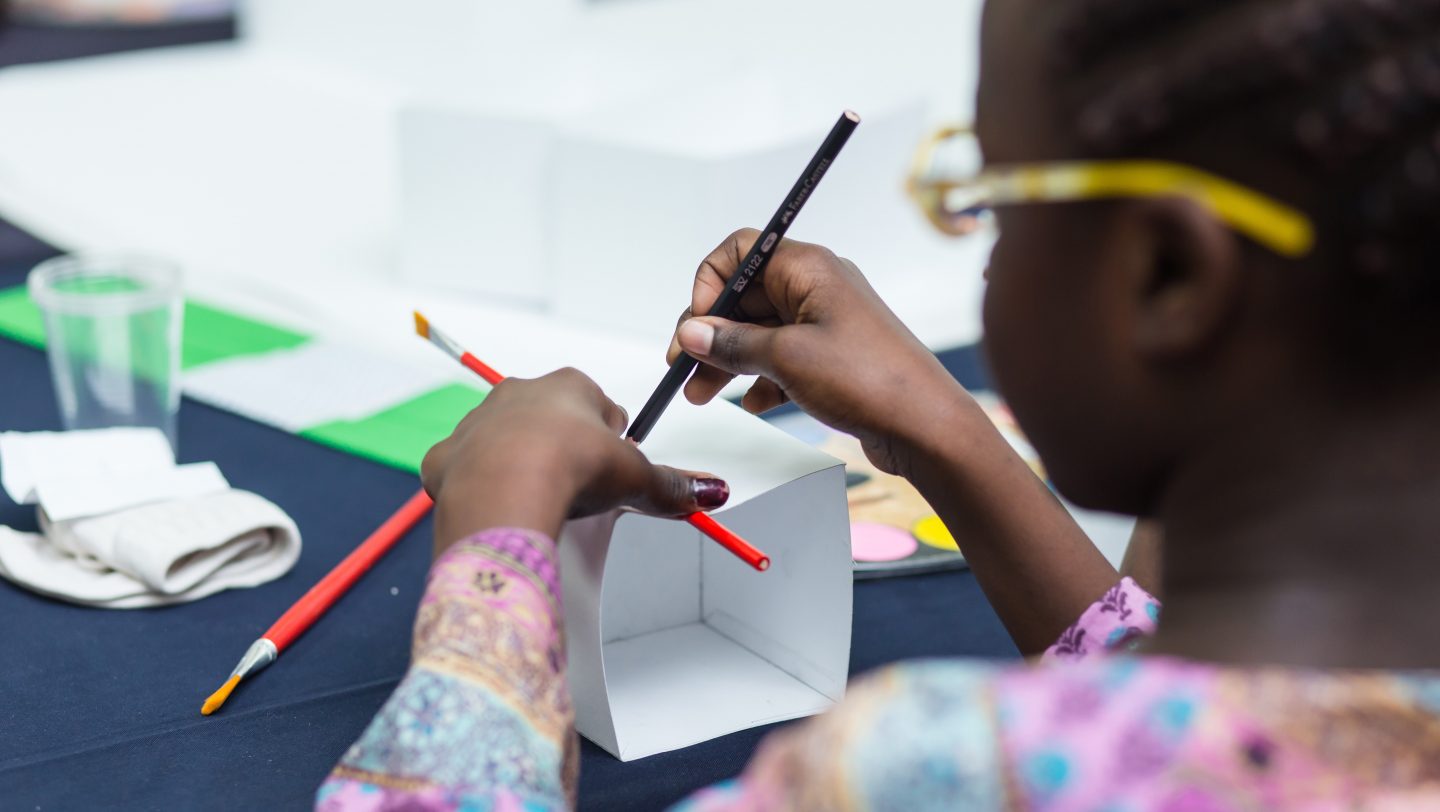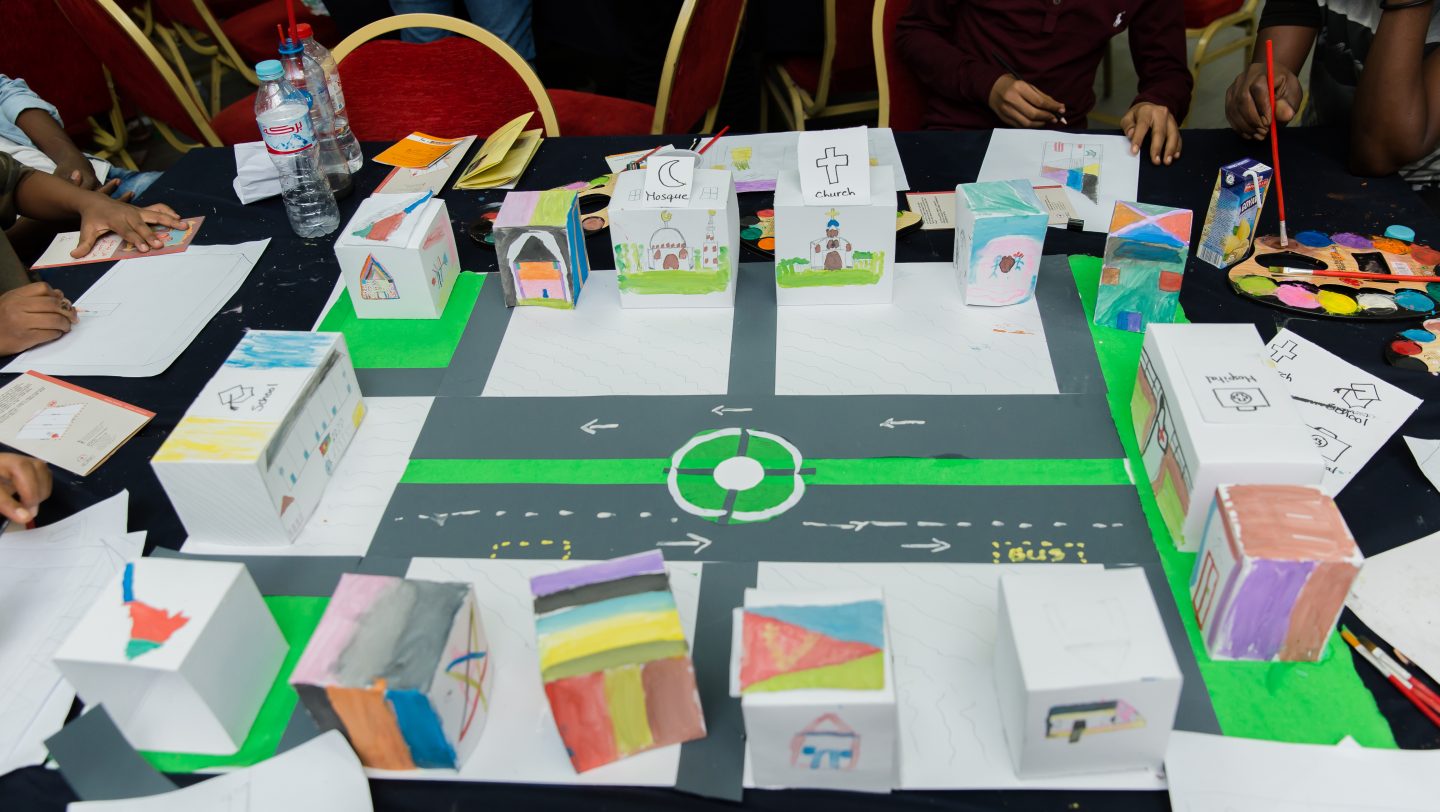UNHCR’s Partner Caritas organizes a colour activity for refugee children and youth to build their own cities.
Members of Egyptian NGO Mashrou El Saada set up the venue for the recreational day. Photo courtesy of Lumina Productions
UNHCR’s partner Caritas hosted a fun-filled, recreational day for over 150 unaccompanied and separated children (UASC) at the Greek Campus last month.
Underpinned by the concept of child protection and children’s right to play, the event endeavored to bring together refugee children and youth, caregivers and members of the wider refugee communities to engage in activities to nurture their social skills and provide psychosocial support.
Setting up tables for a group breakfast signalled the start of an exciting day ahead. Caritas staff proceeded to deliver a health awareness session on the basics of personal hygiene and the importance of developing and maintaining healthy habits.

A refugee child prepares to paint her house in the mini city. Photo courtesy of Lumina Productions
By the end of the session, the children had already rolled up their sleeves and prepared to dive into the upcoming colour therapy activity. The central theme was building a miniature city; an exercise which was administered by Mashrou El Saada, an Egyptian NGO that aims to support vulnerable groups such as women and children through art.
“Our goal was to bring children together, help them express themselves and establish a sense of identity,” said Salma El Lakany, Public Relations Head at Mashrou El Saada. “We made sure these objectives guided every aspect of the design process.”

Members of Caritas, Mashrou El Saada and Rotary Giza Metropolitan. Photo courtesy of Lumina Productions
In order to build their city, groups of Eritrean, Ethiopian, Sudanese and Yemeni children aged between six and 17 huddled in circles to share their visions of the city. Throughout the exercise, they were encouraged to explore subjects such as personal safety, home safety and road safety. They also designed worship places together to foster tolerance within the community.
“I love drawing,” said Nabila, a 15-year-old teenager who recently fled the war in Yemen. “My favourite thing to draw is the Eiffel Tower,” she added as she perfected the famous French landmark before sellotaping it in their city. Although the closest she had ever been to the Eiffel tower was through a television screen, she hopes that one day she will get to see it in real life.
Two hours later, miniature cities began rising up on round tables like a Lego construction coming to life, marking the end of colourful discussions and paint splashing, and announcing the birth of new friendships.

A mini city designed by refugee and asylum-seeker children. Photo courtesy of Lumina Productions
Over half of the world’s refugees are children. In Egypt, UASC make up 16 percent of the total registered refugee and asylum-seeker population, which currently stands at 237,389.
UNHCR prioritizes the protection of UASC and other children at risk across all programmes through prevention and response activities and specialized services. In Egypt, UNHCR works with the national authorities, international and local organisations and communities to provide children and youth access to education, family tracing services, birth registration services and psychosocial support activities.
Share on Facebook Share on Twitter